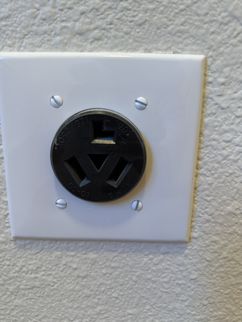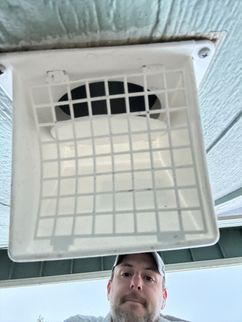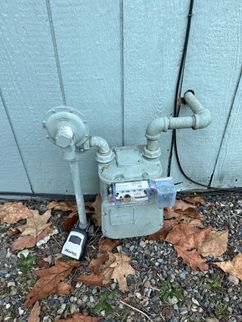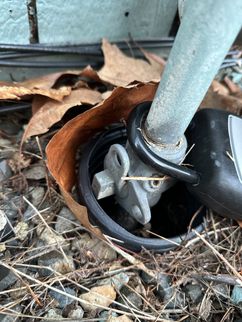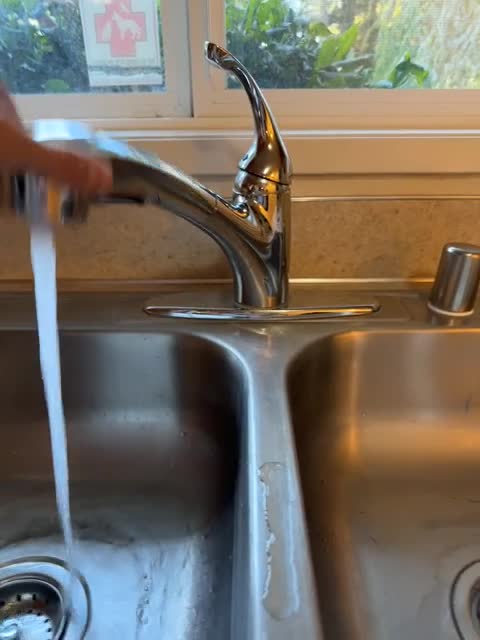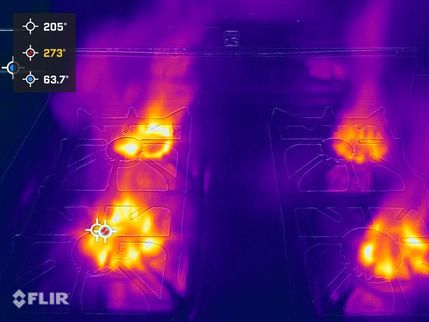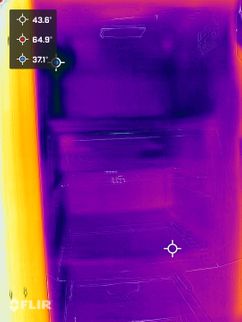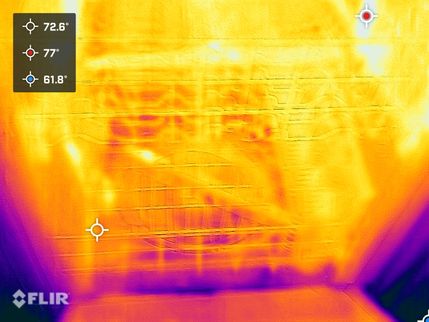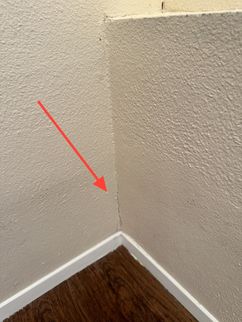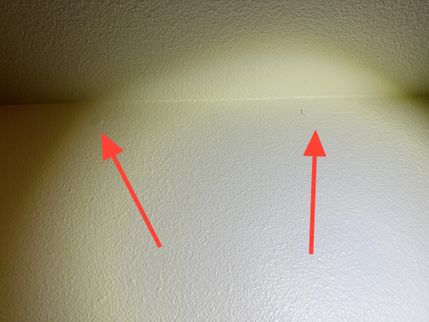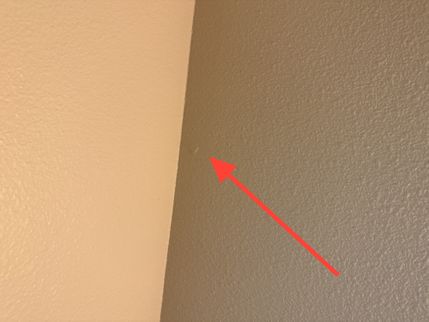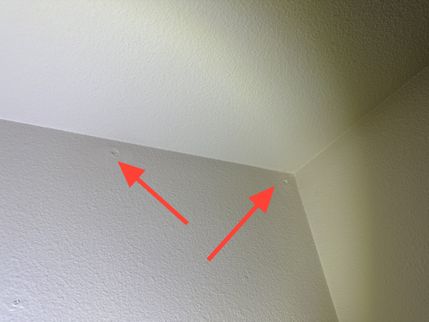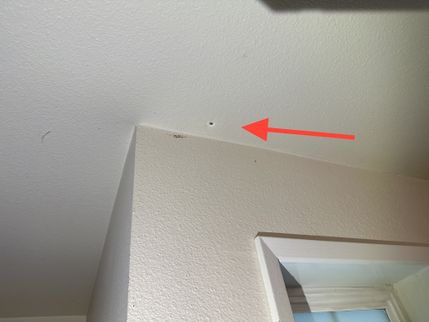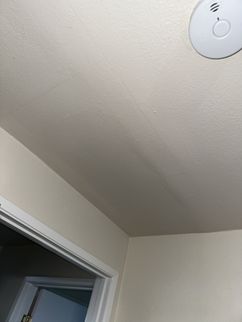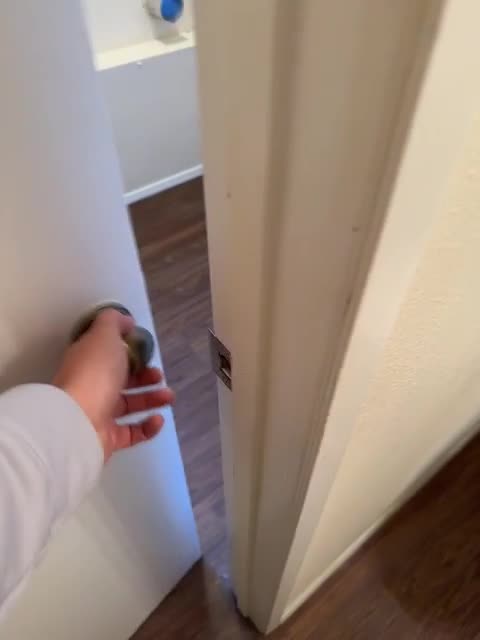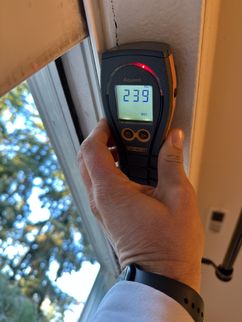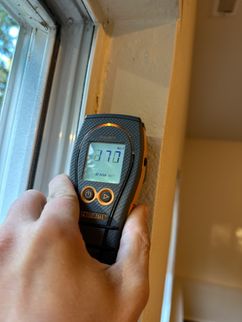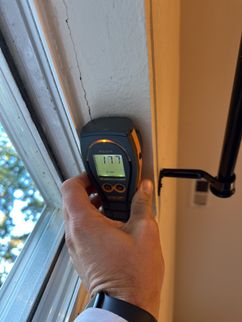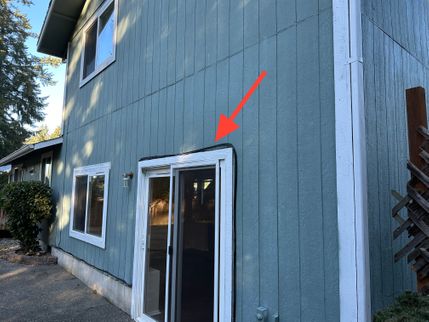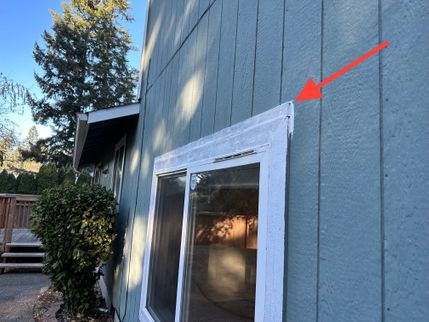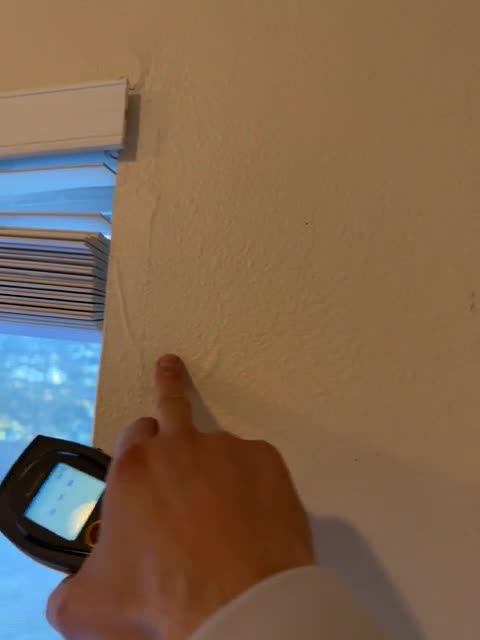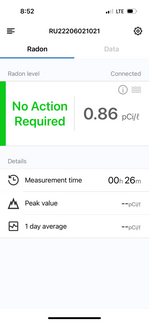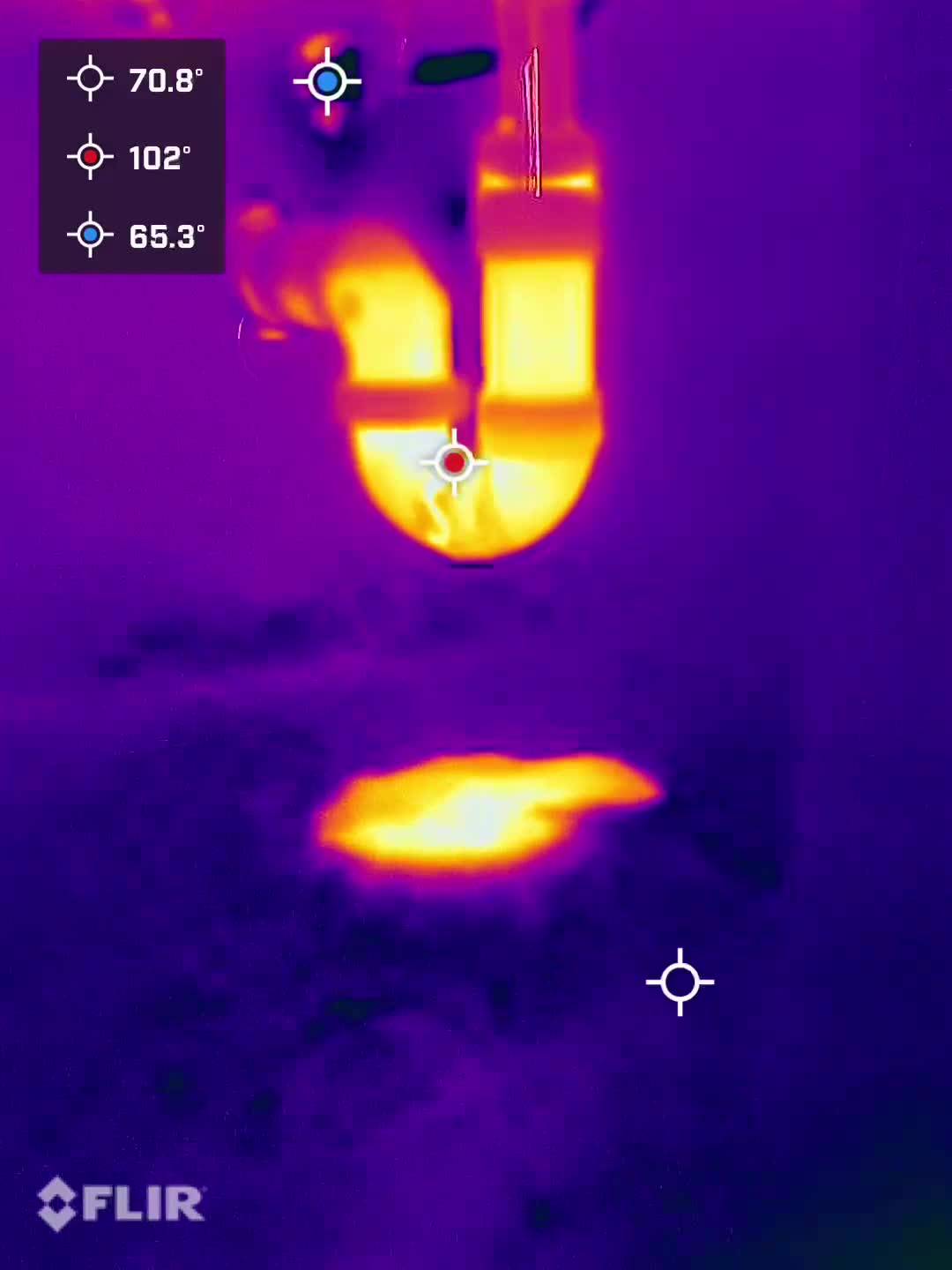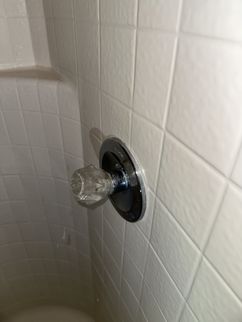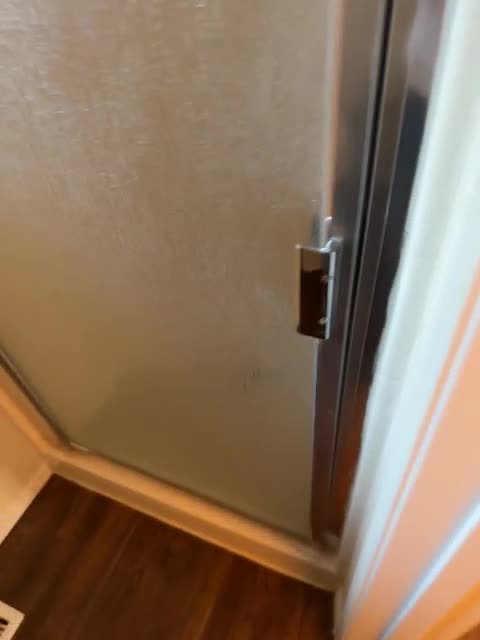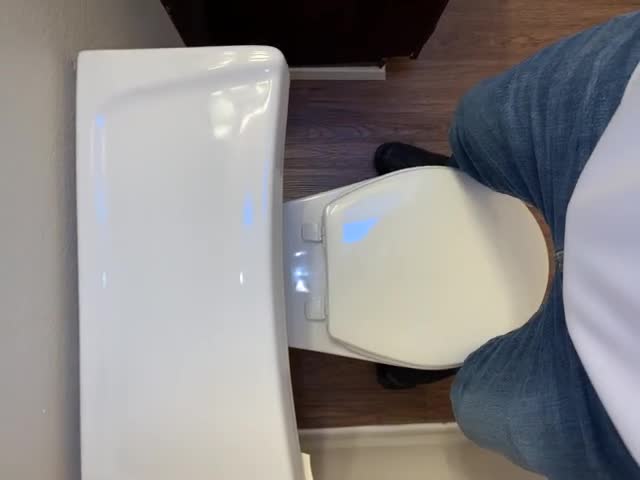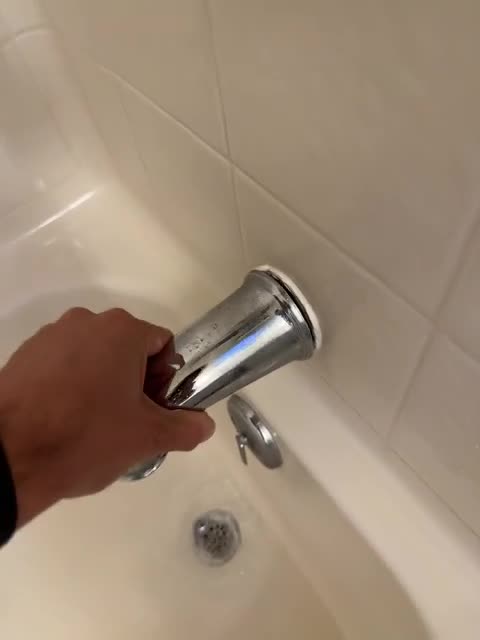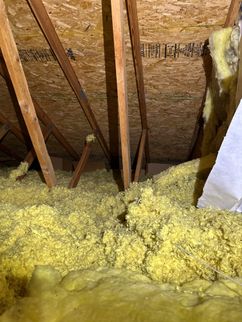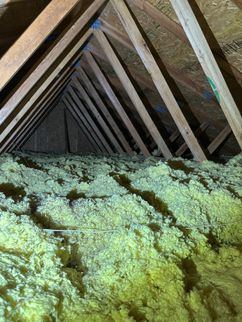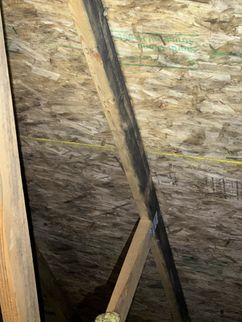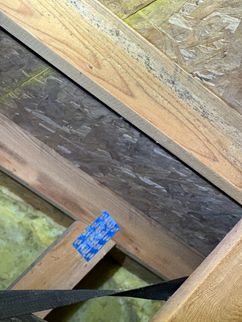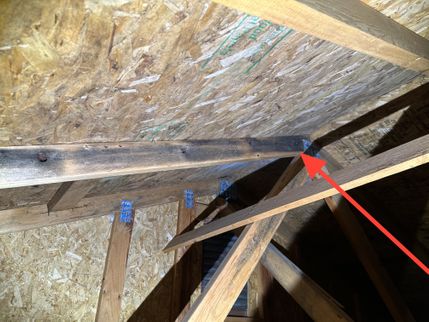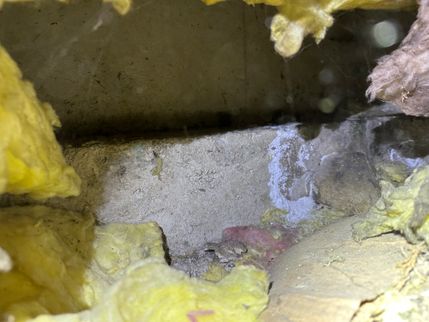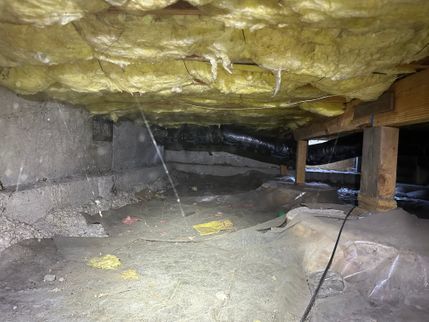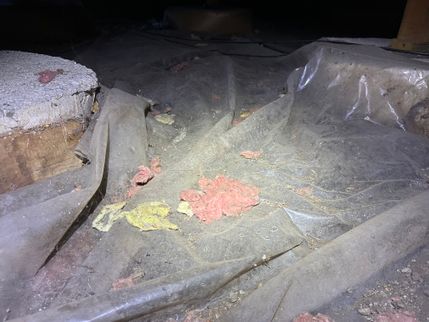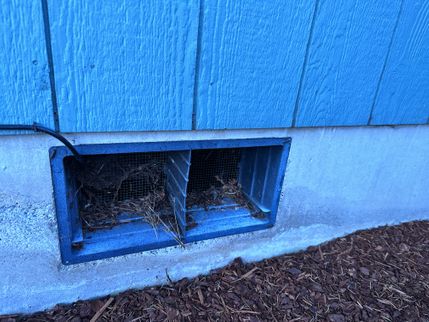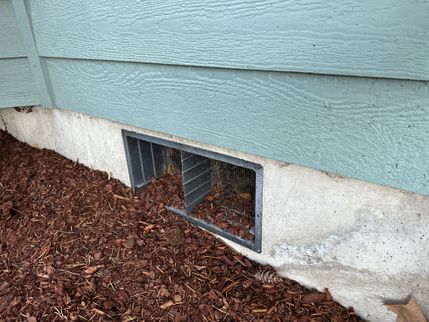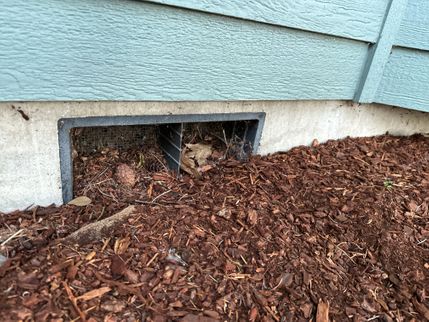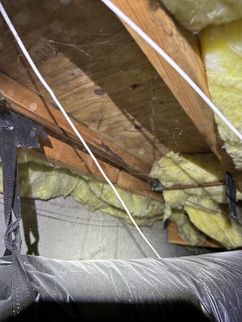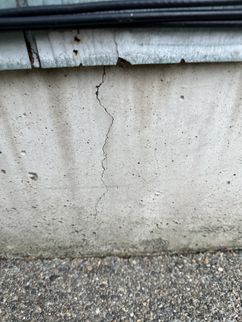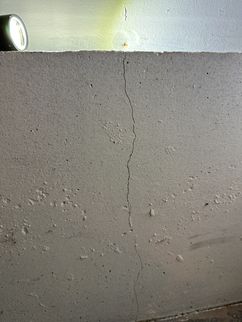The Scope and Purpose of a Home Inspection
Purchasing property involves risk
The purpose of a home inspection is to help reduce the risk associated with the purchase of a structure by providing a professional opinion about the overall condition of the structure. A home inspection is a limited visual inspection and it cannot eliminate this risk. Some homes present more risks than others. We cannot control this, but we try to help educate you about what we don’t know during the inspection process. This is more difficult to convey in a report and one of many reasons why we recommend that you attend the inspection.
A home inspection is not an insurance policy
This report does not substitute for or serve as a warranty or guarantee of any kind. Home warranties can be purchased separately from insuring firms that provide this service.
A home inspection is visual and not destructive
The descriptions and observations in this report are based on a visual inspection of the structure. We inspect the aspects of the structure that can be viewed without dismantling, damaging or disfiguring the structure and without moving furniture and interior furnishings. Areas that are concealed, hidden or inaccessible to view are not covered by this inspection. Some systems cannot be tested during this inspection as testing risks damaging the building. For example, overflow drains on bathtubs are generally not tested because if they were found to be leaking they could damage the finishes below. Our procedures involve non-invasive investigation and non-destructive testing which will limit the scope of the inspection.
This is not an inspection for code compliance
This inspection and report are not intended for city / local code compliance. During the construction process structures are inspected for code compliance by municipal inspectors. Framing is open at this time and conditions can be fully viewed. Framing is not open during inspections of finished homes, and this limits the inspection. All houses fall out of code compliance shortly after they are built, as the codes continually change. National codes are augmented at least every three years for all of the varying disciplines. Municipalities can choose to adopt and phase in sections of the codes on their own timetables. There are generally no requirements to bring older homes into compliance unless substantial renovation is being done.
This is just our opinion
Construction techniques and standards vary. There is no one way to build a house or install a system in a house. The observations in this report are the opinions of the home inspector. Other inspectors and contractors are likely to have some differing opinions. You are welcome to seek opinions from other professionals.
The scope of this inspection
This inspection will include the following systems: exterior, roof, structure, drainage, foundation, attic, interior, plumbing, electrical and heating. The evaluation will be based on limited observations that are primarily visual and non-invasive. This inspection and report are not intended to be technically exhaustive.
Your expectations
The overall goal of a home inspection is to help ensure that your expectations are appropriate with the house you are proposing to buy. To this end we assist with discovery by showing and documenting observations during the home inspection. This should not be mistaken for a technically exhaustive inspection designed to uncover every defect with a building. Such inspections are available but they are generally cost-prohibitive to most homebuyers.
Your participation is requested
Your presence is requested during this inspection. A written report will not substitute for all the possible information that can be conveyed verbally by a shared visual observation of the conditions of the property.
How to Read This Report
Getting the Information to You
This report is designed to deliver important and technical information in a way that is easy for anyone to access and understand. If you are in a hurry, you can take a quick look at our "Summary Page” and quickly get critical information for important decision making. However, we strongly recommend that you take the time to read the full Report, which includes digital photographs, captions, diagrams, descriptions, videos and hot links to additional information.
The best way to get the layers of information that are presented in this report is to read your report online, which will allow you to expand your learning about your house. You will notice some words or series of words highlighted in blue and underlined – clicking on these will provide you with a link to additional information.
This report can also be printed on paper or to a PDF document.
Chapters and Sections
This report is divided into chapters that parcel the home into logical inspection components. Each chapter is broken into sections that relate to a specific system or component of the home. You can navigate between chapters with the click of a button on the left side margin.
Most sections will contain some descriptive information done in black font. Observation narrative, done in colored boxes, will be included if a system or component is found to be significantly deficient in some way or if we wish to provide helpful additional information about the system or the scope of our inspection. If a system or component of the home was deemed to be in satisfactory or serviceable condition, there may be no narrative observation comments in that section and it may simply say “tested,” or “inspected.”
Observation Labels
All narrative observations are colored, numbered and labeled to help you find, refer to, and understand the severity of the observation. Observation colors and labels used in this report are:
- Buyers - How to Create a Repair List:
Detailed description of various aspects of the property with an aspect of safety present. - Major Concern:Concerns that may cost significant money to correct now or in the near future, or items that represent significant health and/or safety hazards that are not necessarily expensive to remedy.
- Repair Item:Repair and maintenance items noted during inspection. Please note that some repair items can be expensive to correct such as re-finishing hardwood floors, but are considered simply repair items due to their cosmetic nature.
- Recommended Maintenance:These are repair items that should be considered "routine home ownership items," such as servicing the furnace, cleaning the gutters or changing the air filters in the furnace.
- Improvement:Observations that are not necessarily defects, but which could be improved for safety, efficiency, or reliability reasons.
- Monitor:Items that should be watched to see if correction may be needed in the future.
- Due Diligence Item:Observation such as a buried oil tank that may require further investigation to determine the severity and / or urgency of repair.
- Efficiency & IAQ:Denotes observations that are needed to make the home more energy efficient as well as to bring the home up to modern insulation standards. This category typically includes windows and insulation. Other items, such as lighting and appliances, are not inspected for their energy status.
- Description:Detailed description of various aspects of the property noted during the inspection.
- Note:Refers to aside information and /or any comments elaborating on descriptions of systems in the home or limitations to the home inspection.
- Homeowner Association:For things deferred to the a Homeowner Association
Summary Page
The Summary Page is designed as a bulleted overview of all the observations noted during inspection. This helpful overview is not a substitution for reading the entire inspection report. The entire report must be read to get a complete understanding of this inspection report as the Summary Page does not include photographs or photo captions.
Summary
Buyers How To Create A Repair Lists
- FR-1 For Realtors:
The "CREATE REQUEST LIST" function, located under the report header, allows any party to build a request list from any of the items in the report. These lists can then be given to appropriate parties as desired.
Major Concerns
- E1-1 Exterior:
Overall the siding/trim have multiple deficiencies and repairs are needed to the exterior. Hire a licensed general contractor to further evaluate and repair all damaged siding as needed.
Examples of observations noted during inspection include:
- All penetrations should be sealed to prevent moisture and pest entry
- Water damage observed to rake and/or fascia boards
- Water damage observed in trim
- Damaged vent covers
- Areas of minor paint failure
- Water damage observed in siding
- Signs of moisture damage
- No caulking or flashing around windows or doors
:
- R-1 Roof:
This roof is done in a three tab composition shingle. These are often rated as 25-30 year shingles. In practice, as a roof assembly, I find these last closer to 18-22 years depending on the quality of the installation, the steepness of the roof and the amount of exposure. Hire a licensed roofing contractor to further evaluate and repair the roof to ensure reliable performance. Please note that roofs are an assembly and require regular maintenance to keep them performing reliably. The roof looks to be near the end of its reliable service life. Roof replacement is recommended to ensure reliable roof performance. Hire a qualified roofing contractor to further evaluate and replace this roof.
Examples of specific observations noted during inspection include:
- Missing kickout flashing
- Remove organic debris from roof
- Downspout discharging directly on roof
- Missing shingles
- Granule loss
- Upper gutters drain onto lower roof
- Organic growth on shingles should be removed
- No drip edge has been installed
- I-3 Interior:
During inspection of the basement window and sliding glass door, I observed signs of water damage and high moisture readings. The window and sliding glass door are not flashed properly and did not appear to have caulking to prevent moisture entry. The trim around the window in this area appears to have a second trim board installed above the standard trim board. It is possible that this board was installed in an attempt to hide existing damage. I recommend having a qualified contractor evaluate and repair as needed. It is difficult to verify the extent of needed repairs as this damage is not visible. Expect to find more signs of rot and moisture damage when removing the drywall in this area.
Repair Items
- G-10 Grounds:
Localized wood decay was noted in the storage shed. Repair wood decay as needed and all conditions conducive to wood decay.
- E1-2 Exterior:
Water damage was noted at and around the eaves in multiple locations. During the next re-roofing expect some localized rot repairs and in the meantime be sure to keep gutters clear and unobstructed.
- E1-3 Exterior:
Overall, this is an old deck. Numerous repairs are needed to the decking systems on this house to ensure safe and reliable performance. Some of these repairs can be made, while other issues simply are the way they are until the deck is rebuilt. I recommend additional inspection and repair of these decks by a qualified general contractor. Options include a full re-building or implementing repairs as are feasible to prolong the useful life of the deck.
Examples of observations and defects noted during inspection include:
- Loose or damaged guardrails
- No ledger board flashing has been installed
- Missing ledger board bolts
- Undersized posts
- Ledger board directly over siding
- R-3 Roof:
Localized wood damage and decay was noted on this wood chimney chase. Hire a carpenter to chase this damage as the extent of damage can not be determined by visual inspection. Remove and replace damaged wood and re-pant as needed. There is a risk of concealed water damage here as this chimney is very exposed.
- E-3 Electrical:
The GFCI in the kitchen was not able to be reset as the buttons did not appear to be operable. The GFCI also appeared to protect the rear exterior receptacle. Have this receptacle replaced by a licensed electrician.
- P-1 Plumbing:
The supply pipe insulation is incomplete in the crawl space. Be sure all supply lines in unheated spaces have been adequately insulated to protect from freezing conditions that could damage the pipes and to prevent heat loss.
- P-5 Plumbing:
The hose bib at the back side of the house is poorly mounted to the siding. This could cause leaks in the siding around the hose bib and could allow the hose bib to become loose during operation. Hose bibs should be securely mounted to blocks that are lead into the siding and which are properly flashed or caulked.
- HCFV-3 Heating, Cooling, Fireplaces and Ventilation:
The metal flue for the furnace is corroded and requires repair or replacement. Have this further evaluated and repaired as recommended by a qualified heating contractor.
- HCFV-4 Heating, Cooling, Fireplaces and Ventilation:
Cracks were noted in the back wall of the fireplace firebox. This can make the fireplace unsafe for fires. Hire a mason or chimney sweep to further evaluate this condition and repair as needed to ensure safe and reliable performance from the fireplace. Firebox repairs need to be made using firebrick and proper refractory mortars designed for high temperatures.
- LAP-1 Laundry and Additional Plumbing:
While using the cold water valve for the washing machine to test the homes water pressure, I observed a small leak from the handle. Have a qualified plumber repack or replace this valve.
- MB-1 Master Bathroom:
The waste plumbing below the right side master bathroom sink is leaking and requires immediate repair. Hire a licensed plumber to further evaluate and repair.
- FB-1 Family Bathroom:
The loose toilet in the family bath needs to be reset and the wax ring and flange should be replaced to prevent hidden plumbing leaks. This is a simple job unless the bolts that fasten the toilet also require repair. Sometimes, loose toilets can even be shimmed for a tight and proper seal by qualified plumbers and sometimes simply caulking can help. I used a moisture meter around the base of the toilet and did not observe elevated moisture readings, although this could change at anytime. Hire a licensed plumber to further evaluate and repair.
Maintenance Items
- G-5 Grounds:
All trees, branches and vegetation should be pruned at least three feet away from the building to eliminate a condition conducive to wood destroying organisms and a path for rodent entry.
- R-4 Roof:
The gutters are clogged with organic debris and require cleaning to ensure proper control of roof runoff. Clean the gutters and ensure they are unobstructed, leak free and properly sloped to drain. This is routine house maintenance; I would expect the need to clean gutters and downspouts regularly.
- P-3 Plumbing:
While testing of the plumbing system today, I noted the water was too hot - 140 degrees F. This is a scald hazard. To prevent scalding, standards recommend indoor hot water temperatures do not exceed 120 degrees. There is some evidence that hot water temperatures should be greater than 130 degrees to prevent Legionaries' disease from developing in the water heater. If this is a concern, you can heat the water in the tank to 140 degrees F and have a tempering valve installed at the hot water tank. Have this further evaluated and repaired by a licensed plumber or simply turn down the temperature as desired to eliminate a scald hazard.
- HCFV-2 Heating, Cooling, Fireplaces and Ventilation:
I recommend installing a bollard in the garage to protect the furnace and water heater from being driven into. A bollard is a metal post that is bolted into the concrete slab. Hire a qualified general contractor to install.
- K-1 Kitchen:
The loose faucet handle for the kitchen sink should be secured to prevent leaks and/or physical damage.
- I-1 Interior:
The drywall / sheetrock finishes require some tune-up repair: See localized cracking, nail pops and minor cracks. No red flags were found to indicate structural movement, but this finishes are not in great condition. Repair sheetrock blemishes as desired.
- I-2 Interior:
Door adjustment is needed for proper operation of the door leading to the laundry room.
- MB-3 Master Bathroom:
The door to the master bathroom shower door did not shut properly. This will allow water to escape from the shower while in use and could potentially damage the floor in this room. Have this door repaired to prevent water from exiting the shower.
- FB-2 Family Bathroom:
The faucet for the family bathroom tub is loose. Have a licensed plumber repair as needed
- A-1 Attic:
Moisture damaged sheathing was noted during inspection of the attic. This could be a combination of factors such as the damaged roof and poor ventilation practices. Have a qualified contractor evaluate and repair as needed.
- CS-2 Crawl Space:
The vapor barrier is done in old clear plastic. This has proven inadequate to control crawl space moisture. 6 mil black plastic is recommended to replace the old and inadequate vapor barrier.
- CS-3 Crawl Space:
Crawl space vents are currently blocked by debris in places and are prone to moisture intrusion. Implement repairs as needed to ensure vents are unobstructed and remove soils to prevent a path for moisture to enter the crawlspace.
Improvement Items
- G-1 Grounds:
I recommend removing all wood from around the home. Wet wood around the property creates a condition conducive to wood destroying organisms.
- G-9 Grounds:
To eliminate a condition conducive to wood destroying organisms, I recommend installing gutters and downspouts for this storage shed.
- E-2 Electrical:
I recommend upgrading the exterior receptacle covers. Use the modern "in-use" receptacle covers designed for outdoor use which employ large plastic water-resistant covers.
- LAP-2 Laundry and Additional Plumbing:
The dryer exhaust duct termination at the exterior of the building is covered with a screen. This is a safety hazard that could block lint and cause a fire. Replace this vent cover with a cover that has a backdraft damper.
- MB-2 Master Bathroom:
The handle for the faucet in the master bathroom was difficult to move.
- A-2 Attic:
The attic and roof cavity ventilation appears to be non-standard. Standards today recommend open ventilation levels in a ratio of 1 to 150 of the attic area. Proper roof cavity ventilation is important to keep the attic space cool and dry. I recommend having a qualified general contractor evaluate the level of ventilation on this roof and improve as needed. Combining different types of venting such as soffit, gable, and roof jack venting can become problematic under certain conditions. Proper attic ventilation is important for the roofing materials to perform as intended and to reduce chances for condensation problems and heat build-up in the attic
- CS-4 Crawl Space:
No positive connections were noted connecting the posts to the footings in the floor frame of the house. This is a standard practice in older construction, but makes the home more susceptible to seismic damage. Positive connections are recommended. Hire a general contractor to further evaluate and repair.
- CS-5 Crawl Space:
The cardboard forms have not been removed from the footings. This can create a condition conducive to wood destroying organisms. Best practices would be to remove the cardboard or to treat the cardboard to prohibit pests from utilizing this as a food source.
Monitors
- G-3 Grounds:
Corrugated storm drain pipe appears to be used for sub-surface drainage work to divert roof runoff away from the building. This product can be prone to failure as it is susceptible to crushing and clogging. No evidence was found during inspection that these drains are backing up and require repair. Monitor during heavy rains to ensure roof runoff is being reliably carried away from the structure.
- G-4 Grounds:
Inadequate clearance between the siding and the soils was noted. This is conducive to wood destroying organisms as it can trap water against the siding. Where possible, a gap should be provided to allow the wood to keep dry. Generally, a 6-inch clearance is recommended between siding and soils. Please note that this is a fairly common installation, and inadequate clearances can often be kept maintained by being diligent about keeping new soils, mulch and leaves from accumulating. One trick where clearances are close is to remove soils and back-fill with gravel - the gravel will not hold water and will help keep the base of the siding dry.
- G-7 Grounds:
Typical cracks were noted in driveway, patio and walkway flatwork. No large immediate repair appears necessary, although I would recommend sealing this crack. Water will continue to deteriorate the surface until the driveway is repaired or replaced. I recommend sealing these cracks and monitoring closely for future expansion.
- SB-1 Structure and Basement:
Concrete cracking can indicate poorly compacted soils below the house which could require a repair, but small cracks can also be a sign of routine concrete shrinkage. It is not possible to determine or verify the cause of these cracks during a visual inspection. The easiest way to prevent on-going settlement in buildings is by controlling roof runoff and site drainage to promote dry soils around the foundation; wet soils do not bear weight well. This will also help to prevent crawl space moisture problems. In my experience, small cracks like these are common in concrete foundations of this age. I would seal and monitor all cracks. If continued movement is noted, I would seek additional inspection by a structural engineer or qualified contractor to determine an accurate scope and urgency for repair to ensure a reliable connection between the foundation and well-compacted, weight-bearing soils.
Due Diligence Items
- G-2 Grounds:
The following limitations and exclusions were noted:
THE FOLLOWING LIMITATIONS AND EXCLUSIONS WERE NOTED:
- Fences that surround the property are typically not inspected
- Soil and slope stability and hydrological conditions are not within the scope of this inspection.
- The functionality of underground drainage components cannot be determined during a typical inspection.
NO RECENT RAINS:
- In the absence of rain, consideration must be given to the possibility that drainage function cannot be adequately assessed; and, indications of past conditions or damage from moisture may not be evident.
- G-6 Grounds:
Whenever large trees are present I recommend that an arborist should be hired to further evaluate the large trees around the property and prune or remove as recommended. Whenever large trees are located near a house a higher level of maintenance should be expected to keep trees safe and healthy and to eliminate the risks of damage to the home or building materials and to eliminate rodent entry points. With larger trees such as firs pruning is recommended to eliminate the sail effect and reduce strain on these tress during high winds. If an arborist has not been out in the last few years, I recommend a new consultation.
- G-8 Grounds:
FENCES AROUND THE PROPERTY:
While fences around the home are generally not inspected except as to how they impact the home, as a courtesy, I still report safety concerns and general conditions when warranted. All fences should be maintained and inspected periodically. Sometimes maintenance and replacement involves the neighbors and I make no determination as to ownership of fences on the borders of the property. Your due diligence is advised.
GENERAL FENCE CONCERNS:
- Repairs will likely involve neighbors
- G1-1 Garage:
Garage receptacles should be GFCI protected. If you place a refrigerator or freezer in the garage I recommend installing a GFCI receptacle that emits an audible alarm if it has been tripped. This will help alert you to the fact that your appliances are not powered and will help prevent unwanted food loss.
- R-2 Roof:
The NFPA (National Fire Protection Association) recommends an annual inspection of all chimneys, fireplaces, solid fuel-burning appliances, and vents. They also recommend an NFPA 211 Standard, Level II inspection upon sale or transfer of the property. A Level II inspection includes, not only cleaning the interior of the chimney pipe, but also the use of specialized tools and testing procedures such as video cameras, etc. to thoroughly evaluate the serviceability of the entire flue lining and fireplace/chimney system. Level II inspections are not always needed, especially for short simple flues that can be inspected visually after a cleaning. If a chimney cleaning has not been performed over the past 12 months, such an inspection is recommended before home changes ownership---for fire safety reasons. Implement any repairs as recommended.
- E-1 Electrical:
Garage receptacles should be GFCI protected. If you plan on using a refrigerator or freezer I recommend installing a GFCI receptacle that has an audible alarm to notify you if the outlet is tripped. This will help prevent food loss.
- P-2 Plumbing:
The average life of these water heaters can vary widely between 8-20 years depending on water quality and maintenance schedule such as frequency of flushing the tank and replacing sacrificial anodes.
- P-4 Plumbing:
Based on visible components, this property appears to have a private on-site septic system. These are specialty systems and are excluded from this inspection. Comments in this report related to this system are made as a courtesy only and are not meant to be a substitute for a full evaluation by a qualified specialist. Generally, septic tanks should be pumped and inspected every 3 years. Depending on the type of system and municipal regulations, inspection and maintenance may be required more frequently, sometimes annually. It is strongly recommended that you have this system inspected and evaluated by a qualified contractor prior to closing.
I recommend:
- Investigating any information about this system's maintenance and repair history
- Reviewing any documentation available for this system
- Learning inspection and maintenance requirements for this system
- HCFV-1 Heating, Cooling, Fireplaces and Ventilation:
Annual servicing of the gas forced air furnace is recommended for safe and reliable heat. The furnace was tested during inspection and was operational. The design life of these forced air furnaces is 15-20 years, although they can last much longer with routine maintenance. I recommend having it serviced and keeping it on an annual service schedule until updated. Furnace was operational at time of inspection.
Efficiency Iaqs
- CS-6 Crawl Space:
The under-floor insulation in the crawl space is sagging and not touching the sub-floor, as such, it is not performing as intended. Use inset string to support the sub-floor insulation up against the sub-floor. The insulation must be in substantial contact with the surface it is insulating to perform as intended.
The Full Report
For Realtors
How to Create a Repair/Request List From This Report:
"Create Request List" : General Note
General Note
The "CREATE REQUEST LIST" function, located under the report header, allows any party to build a request list from any of the items in the report. These lists can then be given to appropriate parties as desired.
General Comments
Building Characteristics, Conditions and Limitations
Style of Home: Contemporary
Type of Building : Single Family (2-story)
Approximate Square Footage: 2000
The approximate square footage listed here is listed as a courtesy and is based off of public records and disclosure. An evaluation of square footage of the buildings and property lines is beyond the scope of this inspection.
Approximate Year of Original Construction: 1994
Attending the Inspection: Buyer and Buyer's Agent
Occupancy: Unoccupied
Animals Present: No
Weather during the inspection: Clear
Approximate temperature during the inspection: Below 32[F]
Ground/Soil surface conditions: Frozen
For the Purposes of This Report, the Front Door Faces: North
North
HOA: HOA Note
Homes in developments with Homeowner Associations often have covenants and easements and other encumbrances associated with them. This inspection makes no attempt at identifying or providing information regarding any such issues, but will mention observed "community" issues that may affect the property. I recommend discussing any such concerns with the seller prior to close of escrow. Typical concerns include, but are not limited to: utility easements, maintenance of driveways and walkways and other common areas, exterior maintenance, maintenance of underground drainage and sumps, maintenance of exhaust vents, etc.
This house was vacant / unoccupied at the time of inspection. Vacant and unoccupied houses present unique challenges for home inspection, especially the piping and wiring systems which have not be subject to regular use prior to the inspection. While these systems can be tested during inspection, this one-time test is different than regular use and it is difficult to know how these systems will respond to regular use after the inspection. For example, septic systems may initially function and then fail under regular daily use. Plumbing traps may operate with no signs of leaks and then let go when being actively used for a few days. Shower pans may only leak when someone is standing in the shower and taking a shower. Seals for plumbing fixtures can dry up and leak when not is use. Sewer lines with roots may allow water flow, but then fail when waste and tissue are flushed; it can take a few days for that to backup. Please understand we are trying our best to look for clues of past or existing problems to paint a realistic best-guess as to the reliability of these systems during inspection.
Grounds
General Grounds Photos
Limitations/Exclusions to Grounds
Limitations and Exclusions: Standard Home Inspection Exclusions, No Recent Rains
The following limitations and exclusions were noted:
THE FOLLOWING LIMITATIONS AND EXCLUSIONS WERE NOTED:
- Fences that surround the property are typically not inspected
- Soil and slope stability and hydrological conditions are not within the scope of this inspection.
- The functionality of underground drainage components cannot be determined during a typical inspection.
NO RECENT RAINS:
- In the absence of rain, consideration must be given to the possibility that drainage function cannot be adequately assessed; and, indications of past conditions or damage from moisture may not be evident.
Drainage and Lot Location
Clearance to Grade: Standard, Siding Too Close to Soils - Monitor
Downspout Discharge: Below grade, Corrugated Storm Drains (Monitor)
Site Description: Flat
Corrugated storm drain pipe appears to be used for sub-surface drainage work to divert roof runoff away from the building. This product can be prone to failure as it is susceptible to crushing and clogging. No evidence was found during inspection that these drains are backing up and require repair. Monitor during heavy rains to ensure roof runoff is being reliably carried away from the structure.
Inadequate clearance between the siding and the soils was noted. This is conducive to wood destroying organisms as it can trap water against the siding. Where possible, a gap should be provided to allow the wood to keep dry. Generally, a 6-inch clearance is recommended between siding and soils. Please note that this is a fairly common installation, and inadequate clearances can often be kept maintained by being diligent about keeping new soils, mulch and leaves from accumulating. One trick where clearances are close is to remove soils and back-fill with gravel - the gravel will not hold water and will help keep the base of the siding dry.
Grounds, Trees and Vegetation
Trees/Vegetation too near building: Yes, Arborist Recommended
All trees, branches and vegetation should be pruned at least three feet away from the building to eliminate a condition conducive to wood destroying organisms and a path for rodent entry.
Whenever large trees are present I recommend that an arborist should be hired to further evaluate the large trees around the property and prune or remove as recommended. Whenever large trees are located near a house a higher level of maintenance should be expected to keep trees safe and healthy and to eliminate the risks of damage to the home or building materials and to eliminate rodent entry points. With larger trees such as firs pruning is recommended to eliminate the sail effect and reduce strain on these tress during high winds. If an arborist has not been out in the last few years, I recommend a new consultation.
Driveways/Walkways/Flatwork
Driveway: Concrete
Walkways: Concrete
Patios: Concrete
Typical Cracks in Flatwork
Typical cracks were noted in driveway, patio and walkway flatwork. No large immediate repair appears necessary, although I would recommend sealing this crack. Water will continue to deteriorate the surface until the driveway is repaired or replaced. I recommend sealing these cracks and monitoring closely for future expansion.
Window Well and Stairwells
None Noted
Retaining Walls
Retaining Wall Material: None noted
Exterior Stairs
Standard
Fences
Present
Conditions Observed: Fences
FENCES AROUND THE PROPERTY:
While fences around the home are generally not inspected except as to how they impact the home, as a courtesy, I still report safety concerns and general conditions when warranted. All fences should be maintained and inspected periodically. Sometimes maintenance and replacement involves the neighbors and I make no determination as to ownership of fences on the borders of the property. Your due diligence is advised.
GENERAL FENCE CONCERNS:
- Repairs will likely involve neighbors
Carports and Outbuildings
Storage shed
Common Observations: Storage Shed (Install Gutters and Downspouts, Localized Rot)
To eliminate a condition conducive to wood destroying organisms, I recommend installing gutters and downspouts for this storage shed.
Exterior
Siding and Trim
Trim Material: Wood
Siding Material: Plywood, Hardboard
Localized Siding Repairs Needed
Overall the siding/trim have multiple deficiencies and repairs are needed to the exterior. Hire a licensed general contractor to further evaluate and repair all damaged siding as needed.
Examples of observations noted during inspection include:
- All penetrations should be sealed to prevent moisture and pest entry
- Water damage observed to rake and/or fascia boards
- Water damage observed in trim
- Damaged vent covers
- Areas of minor paint failure
- Water damage observed in siding
- Signs of moisture damage
- No caulking or flashing around windows or doors
:
Eaves and Soffit
Type: Open rafters
Common Recommendations and Observations: Water Damage (Repair During Re-roofing)
Exterior Flashings
Penetration Block Flashing: Missing
Horizontal flashings at material changes: Present
Window head flashings: Missing, Some caulked
Door head flashings: Missing, Some caulked
Garage overhead door head-flashings: Caulk instead of flashing
Exterior Doors
Solid core
Common Observations: Sliding Glass
Exterior Window Frames
Vinyl
Decks, Balconies and Porches
Present
To see a prescriptive guide for residential wood deck construction click this link:
Deck Structure: Ground contact treated lumber
Deck Ledger Board: Standard
Guardrail: Standard
Decking Material: Hardwood
Most Common Observations: Old Deck - Numerous Repairs - Repair or Replace
Old Deck - Numerous Repairs - Repair or Replace
Common Observations: Big Picture
Overall, this is an old deck. Numerous repairs are needed to the decking systems on this house to ensure safe and reliable performance. Some of these repairs can be made, while other issues simply are the way they are until the deck is rebuilt. I recommend additional inspection and repair of these decks by a qualified general contractor. Options include a full re-building or implementing repairs as are feasible to prolong the useful life of the deck.
Examples of observations and defects noted during inspection include:
- Loose or damaged guardrails
- No ledger board flashing has been installed
- Missing ledger board bolts
- Undersized posts
- Ledger board directly over siding
Garage
General Comments
Attached
Automatic Garage Opener: Present
Garage Door Type: Wood
Garage Slab: Concrete, Typical Cracks Noted
Most Common Observations: Garage GFCI Note
Garage receptacles should be GFCI protected. If you place a refrigerator or freezer in the garage I recommend installing a GFCI receptacle that emits an audible alarm if it has been tripped. This will help alert you to the fact that your appliances are not powered and will help prevent unwanted food loss.
Roof
Roof Materials
Method of Roof Inspection: Walked on roof
Roof Style: Gable
Flashings: Present and Visually Standard
Roof flashings are used to keep a roofing system water proof where the roofing material starts, stops, changes direction or is penetrated. During inspection, we look for standard flashing techniques that could be considered normal or standard in our region. Damaged, incomplete or non-standard flashings can be a sign of an older or less reliable roofing system and may require repair. Any non-standard flashings noted during inspection will be reported on below if found.
Roof Covering Materials: Three-tab composition shingle
Overlay Roof: No
MOST COMMON OBSERVATIONS: Composition - Failing - Replace
This roof is done in a three tab composition shingle. These are often rated as 25-30 year shingles. In practice, as a roof assembly, I find these last closer to 18-22 years depending on the quality of the installation, the steepness of the roof and the amount of exposure. Hire a licensed roofing contractor to further evaluate and repair the roof to ensure reliable performance. Please note that roofs are an assembly and require regular maintenance to keep them performing reliably. The roof looks to be near the end of its reliable service life. Roof replacement is recommended to ensure reliable roof performance. Hire a qualified roofing contractor to further evaluate and replace this roof.
Examples of specific observations noted during inspection include:
- Missing kickout flashing
- Remove organic debris from roof
- Downspout discharging directly on roof
- Missing shingles
- Granule loss
- Upper gutters drain onto lower roof
- Organic growth on shingles should be removed
- No drip edge has been installed
Chimneys
Present
Chimney Material: Metal
Chimney Flue Liners: Not visible
Most Common Observations: Level II Inspection Recommended, Rot in Wood Chimney Chase
The NFPA (National Fire Protection Association) recommends an annual inspection of all chimneys, fireplaces, solid fuel-burning appliances, and vents. They also recommend an NFPA 211 Standard, Level II inspection upon sale or transfer of the property. A Level II inspection includes, not only cleaning the interior of the chimney pipe, but also the use of specialized tools and testing procedures such as video cameras, etc. to thoroughly evaluate the serviceability of the entire flue lining and fireplace/chimney system. Level II inspections are not always needed, especially for short simple flues that can be inspected visually after a cleaning. If a chimney cleaning has not been performed over the past 12 months, such an inspection is recommended before home changes ownership---for fire safety reasons. Implement any repairs as recommended.
Localized wood damage and decay was noted on this wood chimney chase. Hire a carpenter to chase this damage as the extent of damage can not be determined by visual inspection. Remove and replace damaged wood and re-pant as needed. There is a risk of concealed water damage here as this chimney is very exposed.
Skylights
Insulated curb style
Gutters and Downspouts
Gutter and Downspout Materials: Aluminum
Common Recommendations and Observations: Gutter Repairs Needed (Basic Cleaning Needed)
The gutters are clogged with organic debris and require cleaning to ensure proper control of roof runoff. Clean the gutters and ensure they are unobstructed, leak free and properly sloped to drain. This is routine house maintenance; I would expect the need to clean gutters and downspouts regularly.
Electrical
Electric Service Permits Found
Electric Service
Service Equipment
Service Entrance (SE) conductor Size: Aluminum, 4/0, 200 amps
Main Panel Amperage: 200 amps
Electric Service Amperage: 200 amps
Main Electric Panel Location: Garage
Panel Manufacturer: GE
Notes and Limitations: Modern AFCI and GFCI Note, Surge Protection Recommended
AFCI (arc fault protection) is now required on all branch circuits supplying outlets or devices installed in residential dwelling unit kitchens, family rooms, dining rooms, living rooms, parlors, libraries, dens, bedrooms, sunrooms, recreation rooms, closets, hallways, laundry areas, and similar rooms and areas. The goal of this protection is to reduce risks of electrical fires. Consult with a licensed electrician about improving circuit protection as desired. Please note that if you add or replace receptacle outlets to the existing system, they should comply with modern AFCI standards.
Branch Wiring
Wire Material: Copper, Multi-strand Copper
Wiring Method: Non-metallic sheathed cable
Receptacles and Fixtures
Inspection Method: Random Testing
Electric Receptacles: Three wire receptacles
COMMON GFCI COMMENTS: GFCI - Testing Procedure Note, Garage GFCI Note, GFCI - Would Not Re-set
During inspection I test all Ground Fault Circuit Interrupter (GFCI) devices that are readily accessible. GFCI's are those electric receptacles with re-set buttons that you commonly see in bathrooms, kitchens and at the exterior of the home. GFCI's are important safety devices that limit the duration of electrical shocks and have demonstrably saved lives. I recommend being aware of where re-set buttons are located in the house as GFCI's can trip and disable a circuit which can not be re-energized without re-setting the button. I avoid testing to determine if a receptacle or circuit is GFCI protected if it is not clear where the re-set button can be found. This is because re-set buttons can be concealed behind stored items, so such a test risks disabling a circuit in the home. Occasionally, during testing of GFCI's one can fail. This is a statistical reality that some of these devices will fail under testing and require replacement after testing.
Garage receptacles should be GFCI protected. If you plan on using a refrigerator or freezer I recommend installing a GFCI receptacle that has an audible alarm to notify you if the outlet is tripped. This will help prevent food loss.
I recommend upgrading the exterior receptacle covers. Use the modern "in-use" receptacle covers designed for outdoor use which employ large plastic water-resistant covers.
Smoke and Carbon Monoxide Alarm Systems
CO Alarms: Present
Carbon monoxide alarms were found and noted during inspection. Be sure to check these regularly. The standard is 1/ floor and 1 outside all sleeping areas.
The installation of carbon monoxide alarms is recommended for all homes that have fuel burning appliances such as gas or oil furnaces, gas water heaters, gas ovens and cook-tops, gas fireplaces and wood stoves. In addition, Washington State law (WAC 51-51-0315) now requires UL 2034 approved carbon monoxide alarms in ALL homes and condominiums being sold in Washington State. The location should be: at least one alarm outside of all sleeping areas and one on each floor of the house. Best practices are to have these alarms hardwired with a battery back-up - though requirements are for the installation to meet manufacturer's specifications. Carbon monoxide is a colorless, odorless gas that can cause sickness, nausea and even death. Alarms have a useful service life of roughly 6 years, so changing them more frequently than smoke alarms is recommended.
Smoke Alarms: Present
For reliability, fire marshals recommended updating smoke alarms every 10 years and changing batters bi-annually. Modern standards recommend smoke alarms in all bedrooms, in all hallways outside bedrooms and at least one on each floor of the building. The latest data indicate that we should be using photo-electric technology in our smoke alarms for improved fire detection and to reduce problems with false alarms which can lead to disabling of this important safety system. Unfortunately, the alarms have to be removed to determine if they are photo-electric or ionization types. It is surprisingly complex to accurately test a smoke alarm system and determine the reliability, age, and type of sensor technology used, especially as many homes can have half a dozen or more alarms throughout the house. A complete evaluation of smoke alarms is beyond the scope of this inspection. For optimal fire safety, I recommend taking control of these important safety devices and learning about how to service and maintain your smoke alarm system to keep the building occupants safe.
Electrical Grounding System
Present - Could Not Confirm
During a home or property inspection, every effort is made to inspect the visible components of the electrical system grounding. The grounding system is critical for safely discharging electrical surges, especially in the case of lightning strikes. There is no way in the context of a home inspection to verify the "effectiveness" of the grounding system as much of the system is not visible and there are not practical tests one can perform in the way we can test a furnace or a plumbing fixture.
Electrical Bonding System
Present - Could Not Confirm, Bonding Noted on Water Pipes, Bonding Noted on Gas Pipes
During the inspection, I attempt to visually document electrical system bonding. There is no way in the context of a home inspection to verify the "effectiveness" of system bonding. All metallic systems in the building are required to be "bonded" (connected) to the the building's electrical grounding system. Bonding creates a pathway to shunt static charges (that would otherwise build up on the system) to earth, and to provide a pathway to trip a breaker in the event that these bonded metallic components became energized.
Plumbing
Water Meter
 Location of Water Meter Note
Location of Water Meter Note
This shows the location of the water meter at the street side of the house. The meter was not spinning when viewed, indicating that there are likely no leaks in the supply.
Water Pressure Tested During Inspection
Location of Main Water Shut Off
Water Service Supply
Pipe Material: Unknown
Water Supply: Public water
Water Pressure: 50 PSI
Pressure Reducing Valve: None noted
Main Water Shut-off Location: Entry Coat Closet
Distribution Pipe
Pipe Insulation: Missing in Crawl Space
Supply Pipe Materials: Copper
Functional Flow: Average
Circulation Pump: None Noted
 Angle Stops Testing Note
Angle Stops Testing Note Thermal Image Note
Thermal Image Note Distribution Pipe Note
Distribution Pipe Note
Angle stops are the shut offs located below plumbing fixtures such as sinks and toilets. These are designed so that water can be shut off locally to a fixture without shutting off the water to the entire house so that localized fixtures can be serviced and repaired or replaced. Home inspectors do NOT test angle stops during inspection as there is a risk of leakage which could cause damage to the home.
During inspection I ran hot water through applicable plumbing fixtures to test for the presence of leaks. I did not observe any leaks at these fixtures or waste lines.
Water Heater
System Type: Tank
Manufacturer: GE
Water Temperature: 140 Degrees F
Size: 40 gal
Age: 2009
Energy Source: Gas
Temperature Pressure Relief Value: Present - Not Tested
The temperature and pressure relief valve is arguably one of the most important safety devices in your house. Should the thermostats fail inside your water heater, the TPRV allows excess pressure to "blow off," which will prevent catastrophic build up of temperature and pressure which can make water heaters explosive. I do not test the "blow off valve" during inspection as there is a risk it could stick open and testing could cause the need for a repair. Manufacturers of these relief valves recommend that these be tested annually. You need to decide for yourself if this is the type of annual testing you wish to perform.
Straps : Present
Common Notes: Average Lifespan Note
Average Lifespan Note
The average life of these water heaters can vary widely between 8-20 years depending on water quality and maintenance schedule such as frequency of flushing the tank and replacing sacrificial anodes.
While testing of the plumbing system today, I noted the water was too hot - 140 degrees F. This is a scald hazard. To prevent scalding, standards recommend indoor hot water temperatures do not exceed 120 degrees. There is some evidence that hot water temperatures should be greater than 130 degrees to prevent Legionaries' disease from developing in the water heater. If this is a concern, you can heat the water in the tank to 140 degrees F and have a tempering valve installed at the hot water tank. Have this further evaluated and repaired by a licensed plumber or simply turn down the temperature as desired to eliminate a scald hazard.
Waste Pipe and Discharge
Discharge Type: Septic system
Please note that when the sewage discharge type is listed here, it is listed based on public records and disclosure. It is always possible that the system is not as it is listed; for example, a property could be listed as a public sewer system when in fact it is on a private septic system. This is unlikely, but is another reason why we recommend further evaluation of all sewage discharge systems.
Waste and Vent Pipe Materials: ABS plastic
Location of Sewer Cleanout: Side Yard
Based on visible components, this property appears to have a private on-site septic system. These are specialty systems and are excluded from this inspection. Comments in this report related to this system are made as a courtesy only and are not meant to be a substitute for a full evaluation by a qualified specialist. Generally, septic tanks should be pumped and inspected every 3 years. Depending on the type of system and municipal regulations, inspection and maintenance may be required more frequently, sometimes annually. It is strongly recommended that you have this system inspected and evaluated by a qualified contractor prior to closing.
I recommend:
- Investigating any information about this system's maintenance and repair history
- Reviewing any documentation available for this system
- Learning inspection and maintenance requirements for this system
Exterior Hose Bibs
 Winterized - not tested
Winterized - not tested Poorly Mounted
Poorly Mounted
The exterior hose bibs were winterized at the time of inspection and could not be tested. Inquire with the seller to see if they are generally operable.
The hose bib at the back side of the house is poorly mounted to the siding. This could cause leaks in the siding around the hose bib and could allow the hose bib to become loose during operation. Hose bibs should be securely mounted to blocks that are lead into the siding and which are properly flashed or caulked.
Sewer Scope
Waste Pipe and Discharge
No sewer scope was performed for the purposes of this inspection.
Side Sewer Type
Side Sewer Type: On-Site Sewer System (Septic Tank)
On-Site Sewer System (Septic Tank)
Heating, Cooling, Fireplaces and Ventilation
Heating System
Energy Source: Natural gas
Heating Method: Gas forced air furnace
This house has a gas forced air furnace. A critical component to all combustion equipment like this is the heat exchanger. This is the welded clam-shell piece of metal inside the furnace that contains the products of combustion so that moisture, carbon monoxide and other products of combustion do not mix with interior air and get safely vented to the exterior. Heat exchangers on modern furnaces have an average life expectancy of 15-20 years. Unfortunately, heat exchangers are buried inside of heating equipment; they are not visible and specifically excluded from a home inspection.
Manufacturer: Armstrong
Capacity: 40,000 btu's
Age: 1993
Last Service Record: Service Records and Listing Plate Pics
Common Observations: Vent (Corroded At Furnace)
Basic Servicing Recommended: Gas Forced Air
Gas Forced Air
Annual servicing of the gas forced air furnace is recommended for safe and reliable heat. The furnace was tested during inspection and was operational. The design life of these forced air furnaces is 15-20 years, although they can last much longer with routine maintenance. I recommend having it serviced and keeping it on an annual service schedule until updated. Furnace was operational at time of inspection.
I recommend installing a bollard in the garage to protect the furnace and water heater from being driven into. A bollard is a metal post that is bolted into the concrete slab. Hire a qualified general contractor to install.
Air Filters
Filtration Systems: Disposable
Your heating system has disposable air filters installed. These should be changed quarterly or more to ensure proper air flow at the furnace. Be sure to install the filters with the arrows pointing in the same direction as the air flow in the furnace.
Heating and Cooling Distribution Systems
Heat Source in Each Room: Present
Distribution Method: Forced Air / Ducts
Mechanical Ventilation Systems
Bath Fan Ducting: Ductwork not visible
Determining proper ventilation to the exterior from kitchen, bath and laundry fans can be tricky as exhaust fan ductwork is often concealed behind finishes and fan terminations can be all over the house from the roof to the foundation, presenting difficulties for systematically checking every fan termination. During inspection, every effort is made to verify proper terminations of fan vents to the exterior, but it is possible to miss something here that is latent or concealed.
Kitchen Fan Ducting: Ducted to exterior
Whole House Fans, Ventilation and HRVs: Landry / House Fan Timer
Solid Fuel Fireplaces
Fireplace Types: Prefabricated metal firebox
Common Observations: Masonry Fireplace (Damaged Brick)
Cracks were noted in the back wall of the fireplace firebox. This can make the fireplace unsafe for fires. Hire a mason or chimney sweep to further evaluate this condition and repair as needed to ensure safe and reliable performance from the fireplace. Firebox repairs need to be made using firebrick and proper refractory mortars designed for high temperatures.
Laundry and Additional Plumbing
Washer
Dryer
Not included
Proper dryer exhaust venting is critical for safe and reliable performance from the dryer. Here are some basic rules of thumb for dryer exhaust duct installation: Unless a vent-free appliance is being used, the dryer exhaust vent must terminate outdoors. It should be no more than 25 feet long and for every 90 degree turn subtract 5 feet and for every 45 degree bend subtract 2.5 feet. Use only smooth-wall metal vent pipe @ 4 inch pipe diameter. Do not use plastic pipe and plastic flex pipe. If a flexible connector is needed behind the dryer use a short amount of corrugated metal pipe. If the exhaust duct is getting pinched behind dryer, consider use of a dryer vent box, pictured here. Flex and corrugated pipes should never be used in concealed spaces such as through walls or in attic or crawl spaces. Insulate dryer exhaust duct where it passes through unconditioned spaces to prevent condensation that could hasten lint build-up inside the pipe. Do not use screws to connect pipe as these can trap lint. Secure duct with foil tape as needed. Be sure duct is sleeved properly so that it will not trap lint and clean the vent regularly, especially if it is a long exhaust run.
Power Source: Electric
Exhaust Duct: Ducted to Exterior
Other Common Comments: Three-Prong Receptacle, Screened Cover
The electric receptacle to the dryer is three-prong or three -wire system. This is an older configuration. Modern electric dryers circuits require a four-wire system. These older three-wire circuits are still allowed, but be sure to tell your appliance installer that you have a three prong outlet so the cord can be swapped out and the appliance appropriately bonded.
The dryer exhaust duct termination at the exterior of the building is covered with a screen. This is a safety hazard that could block lint and cause a fire. Replace this vent cover with a cover that has a backdraft damper.
Fuel Storage and Distribution
General Comments
 No Fuel Storage Noted
No Fuel Storage Noted
No fuel storage devices were found on site during our visual inspection.
Oil Storage
None noted
Propane Storage
None noted
Gas Meter
Gas, Propane and Oil Piping
Gas Piping Materials Noted: Steel, Copper
Kitchen
Sinks and Faucets
Tested
Common Observations: Faucet (Loose Handle)
The loose faucet handle for the kitchen sink should be secured to prevent leaks and/or physical damage.
Cabinets and Countertops
Countertop Material: Plastic laminate
Cabinet Material: Wood laminate
Ventilation Method
Fan Ducted to Exterior
Appliances
Refrigerator: Operating
Dishwasher: Operated
Dishwasher Air Gap: Present
Range/ Oven /Cook-tops: Gas
Disposer: Not Recommended on Septic - Monitor
Thermal Images Testing Procedure Notes: Thermal images - one oven, Thermal images - cooktop, Thermal images - freezer and refrigerator working, Thermal images - dishwasher
Most Common Observations: Ice Maker Off
Ice Maker Off
The refrigerator ice maker was off during inspection so I could not verify that it was operational. Repair or make operable as needed.
General Kitchen Condition
Standard
Interior
Floors and Floor Materials
Floor Materials: Wood Laminate
Floor Settlement: Minor
Walls, Ceilings, Trim and Closets
Wall and Ceiling Materials: Drywall
Common Observations: Drywall (Straight Line Cracks Noted, Nail Pops, Tune-Up Repairs Needed)
Cracks were noted in the ceiling and walls. These are straight line cracks and no other indications were found to indicate settlement. Cracking lines like these can be due to routine settlement or moderate seasonal expansion and contraction of the structure. Cracks like these can also be related to workmanship and nailing of framing and drywall or deflection from the framing. The seasonal types of cracking can be most problematic as they will tend to re-open after repair.
 Thermal Imaging Note
Thermal Imaging Note
During this inspection, a thermal imaging camera was used to check walls and ceilings for thermal anomalies and also to check specific appliances for verification of proper function. Thermal imaging cameras use the infrared light spectrum to build a picture of the house. Experienced thermogrophers look for clues in these thermal images that could lead us to otherwise concealed water leaks or missing air or thermal barriers. In older homes, incomplete air and thermal barriers are so common, we will only report on items that look significantly deficient and are worthy of correction. This service is included with our home inspection; it is limited and is not a complete thermal mapping of the house. The use of an infrared camera is well beyond the minimum standards for a home inspection, but we offer this service because we know it is valuable and can help us help our clients by improving our inspection services. Relevant thermal images if found will be included in this report.
Wall Insulation and Air Bypass
Wall Insulation: Not Visible
Stairs and Railings
Standard
Interior Doors
Hollow Core
Common Observations: Door Adjustment Needed (General Note - 1)
Door adjustment is needed for proper operation of the door leading to the laundry room.
Windows
Window Glazing: Double pane
Interior Window Frame: Vinyl
Window Styles: Sliding, Fixed pane
Limitations and Testing Procedures: Testing Procedure Note
Testing Procedure Note
During inspection today I inspected the headers and sills around all windows where accessible. I spot checked around windows using a moisture meter. It is always a good practice to monitor any exposed windows, especially those with south and west exposures to check for leaks during heavy wind-driven rains.
During inspection of the basement window and sliding glass door, I observed signs of water damage and high moisture readings. The window and sliding glass door are not flashed properly and did not appear to have caulking to prevent moisture entry. The trim around the window in this area appears to have a second trim board installed above the standard trim board. It is possible that this board was installed in an attempt to hide existing damage. I recommend having a qualified contractor evaluate and repair as needed. It is difficult to verify the extent of needed repairs as this damage is not visible. Expect to find more signs of rot and moisture damage when removing the drywall in this area.
Pests and Rodents
None noted
Radon
Radon Testing
Master Bathroom
Sinks and Cabinets
Tested
Common Observations: Waste (Leaking)
The waste plumbing below the right side master bathroom sink is leaking and requires immediate repair. Hire a licensed plumber to further evaluate and repair.
Toilet
Tested
Bathtub / Shower
Tested
The door to the master bathroom shower door did not shut properly. This will allow water to escape from the shower while in use and could potentially damage the floor in this room. Have this door repaired to prevent water from exiting the shower.
Bathroom Ventilation
Type: Bath fan
General Bath Condition
Standard
 Testing Procedure Note
Testing Procedure Note
During inspection today I operated all plumbing fixtures in bathrooms. I ran a moisture meter around toilets and tile shower enclosures to check for concealed leaks and sounded for loose tile and finishes in shower and tub enclosures. I do not test bathtub overflow drains as this risks damaging finishes around the tub. Monitor tubs while filling and avoid pushing water into the overflow. Even well-installed overflow drains can leak as the gaskets that seal the overflow will dry out over time and may no longer provide a watertight seal. Monitor plumbing after moving into a new home as testing during inspection presents less stress on plumbing than daily use. Please note that vacant homes present additional risk as it can be difficult to distinguish how the plumbing system will respond to daily use. Any defects uncovered during inspection are listed in this report.
Family Bathroom
Sinks and Cabinets
Tested
Toilet
Tested
Common Observations: Mounting (Loose Toilet - No Red Flags)
The loose toilet in the family bath needs to be reset and the wax ring and flange should be replaced to prevent hidden plumbing leaks. This is a simple job unless the bolts that fasten the toilet also require repair. Sometimes, loose toilets can even be shimmed for a tight and proper seal by qualified plumbers and sometimes simply caulking can help. I used a moisture meter around the base of the toilet and did not observe elevated moisture readings, although this could change at anytime. Hire a licensed plumber to further evaluate and repair.
Bathtub / Shower
Tested
Common Observations: Supply / Faucets (Loose Handle for Mixing Valve)
The faucet for the family bathroom tub is loose. Have a licensed plumber repair as needed
Bathroom Ventilation
Type: Bath fan
General Bath Condition
Standard
Spare Bathroom
Sinks and Cabinets
Tested
Toilet
Tested
Bathroom Ventilation
Type: Bath fan
General Bath Condition
Standard
Attic
Attic Access
Viewed at access
There is no ramp or safe way to access the attic space. Crawling through insulation and on top of framing risks damaging thermal barriers and ceiling finishes and is not a safe way to access an attic. This limited inspection of this space.
Roof Framing and Sheathing
Rafters: Truss
Sheathing: OSB
Common Observations: Moisture Damaged Sheathing
Attic Insulation
Insulation Type: Fiberglass
Approximate Insulation R-Value on Attic Floor: Inconsistent, 30
Attic and Roof Cavity Ventilation
Attic Ventilation Method: Soffit vents, Roof jack vents, Gable vents
Attic and roof cavity ventilation is a frequently-misunderstood element of residential construction. All roof cavities are required to have ventilation. The general default standard is 1 to 150 of the attic area and ideally, this comes from at least 60% lower roof cavity ventilation and 40% upper, but this is a wild over-simplifications of the subject. As a good guiding principle the most important elements for healthy attic spaces, which are traditionally insulated and ventilated are:
- Make sure the ceiling between the living space and the attic is airtight
- Ventilate consistently across the whole lower part of the roof cavity with low, intake soffit venting
- Upper roof cavity venting is less important and if over-installed can exacerbate air migration into the attic from the living space.
- Avoid power ventilators which can depressurize the attic and exacerbate air migration from the house into the attic.
For more information, please see: Link
Common Observations: Inadequate Ventilation (General Non-standard Note)
The attic and roof cavity ventilation appears to be non-standard. Standards today recommend open ventilation levels in a ratio of 1 to 150 of the attic area. Proper roof cavity ventilation is important to keep the attic space cool and dry. I recommend having a qualified general contractor evaluate the level of ventilation on this roof and improve as needed. Combining different types of venting such as soffit, gable, and roof jack venting can become problematic under certain conditions. Proper attic ventilation is important for the roofing materials to perform as intended and to reduce chances for condensation problems and heat build-up in the attic
Crawl Space
General Crawl Space Photos
Representative Photos: Provided
Provided
Crawl Space Access
Method of Inspection: Crawled
During inspection of the crawl space, every effort is made to inspect the entire space. Visual inspection of crawl spaces is difficult and limited as access is often restricted by pipes, ducts and sub-floor insulation as well as limited clearances.
Vapor Barrier
Vapor Barrier Material: Old Clear Plastic
Crawl Space Ventilation
Ventilation Method: Exterior wall vents, Blocked Vents (General Note)
Posts and Footings
Standard
Common Defects: Positive Connections (Missing at Footing - Typical)
No positive connections were noted connecting the posts to the footings in the floor frame of the house. This is a standard practice in older construction, but makes the home more susceptible to seismic damage. Positive connections are recommended. Hire a general contractor to further evaluate and repair.
Insulation
Insulation Type: Fiberglass
Approximate R-Value: R-24
Common Defects: Sagging Insulation
The under-floor insulation in the crawl space is sagging and not touching the sub-floor, as such, it is not performing as intended. Use inset string to support the sub-floor insulation up against the sub-floor. The insulation must be in substantial contact with the surface it is insulating to perform as intended.
Moisture Conditions
No water was visible or present at the time of inspection
Structure and Basement
Foundation
Evidence of Seismic Protection: Some Signs
Building Configuration: Basement, Crawl space
Foundation Description: Poured concrete
Common Repairs and Observations: Poured Concrete (Cracks, Small and Typical - Monitor)
Concrete cracking can indicate poorly compacted soils below the house which could require a repair, but small cracks can also be a sign of routine concrete shrinkage. It is not possible to determine or verify the cause of these cracks during a visual inspection. The easiest way to prevent on-going settlement in buildings is by controlling roof runoff and site drainage to promote dry soils around the foundation; wet soils do not bear weight well. This will also help to prevent crawl space moisture problems. In my experience, small cracks like these are common in concrete foundations of this age. I would seal and monitor all cracks. If continued movement is noted, I would seek additional inspection by a structural engineer or qualified contractor to determine an accurate scope and urgency for repair to ensure a reliable connection between the foundation and well-compacted, weight-bearing soils.
Floor, Wall and Ceiling Framing
Wall Framing: 2x4
Wall Sheathing: OSB
Floor Framing: 2x8
Sub-Floor Material: Plywood
Ceiling Framing: Bottom cord of truss
Basement
Partial
Crawlspace
Present
Checking Out Procedure
Check Out List
Oven: Off
Off
Lights: Client and Realtor Still In House
Client and Realtor Still In House
Heating and Cooling: Restored to Pre-inspection temperatures
Restored to Pre-inspection temperatures
Appliances: Off / finishing cycle
Off / finishing cycle
Receipt -- The Full Report
| Inspection Fee | $425.00 |
| $425.00 | |
| PAID |
Main Inspections LLC
C/O Matt Main
5920 S Thompson Ave
Tacoma, WA 98408
253-279-3525
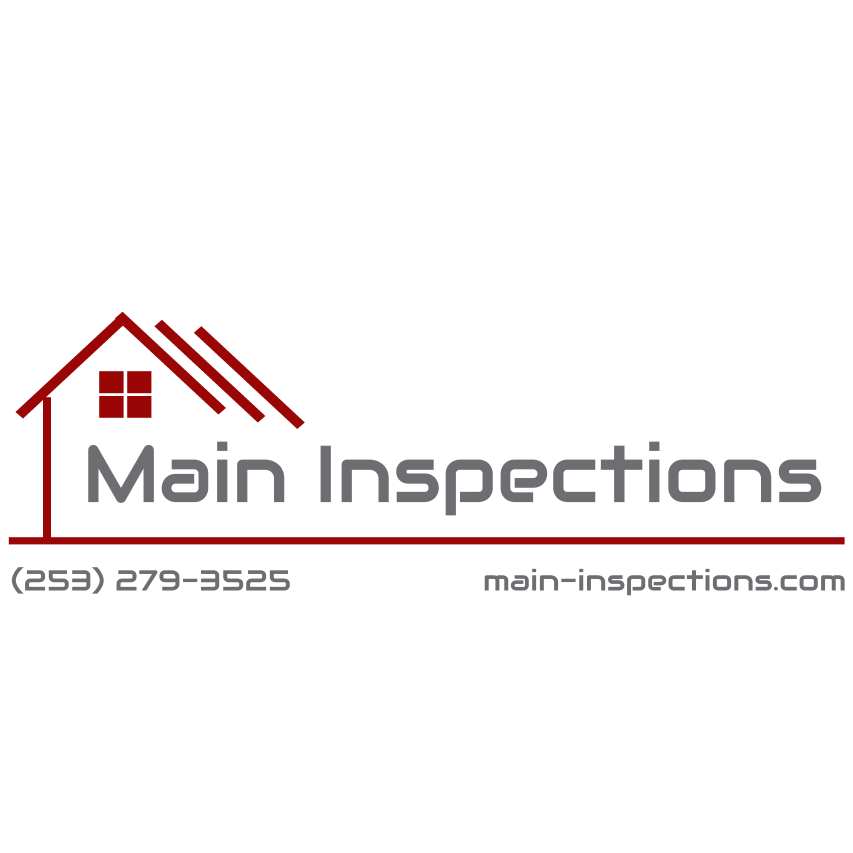
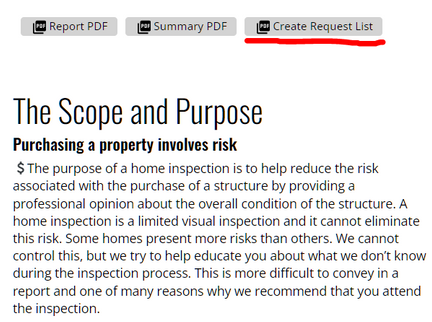

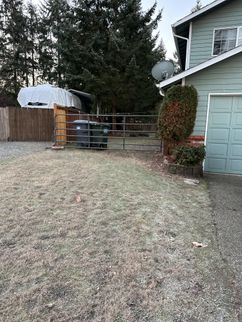

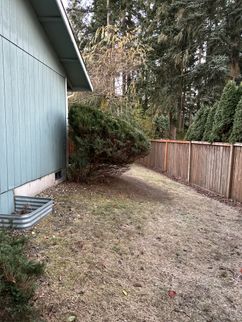
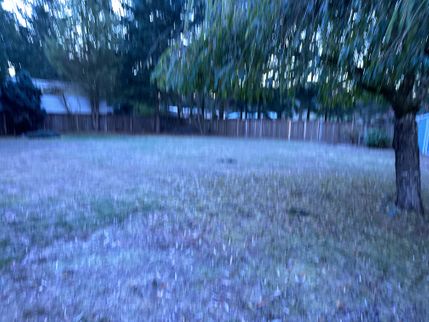
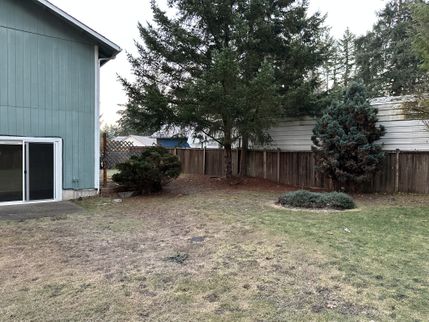

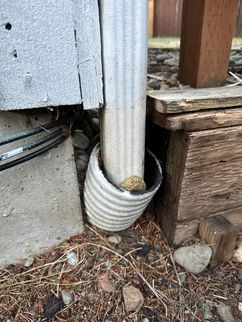
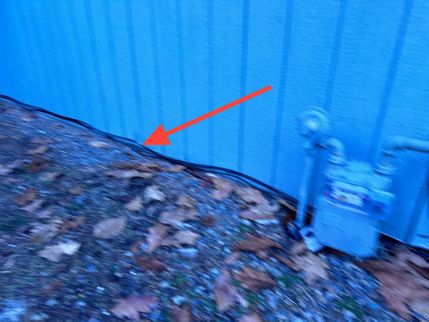

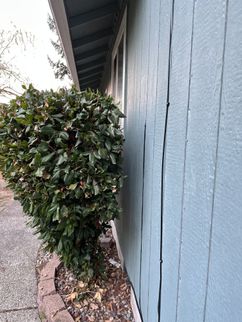

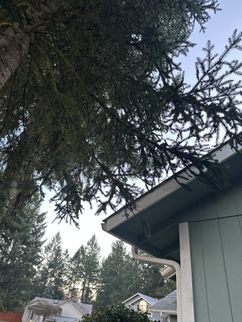

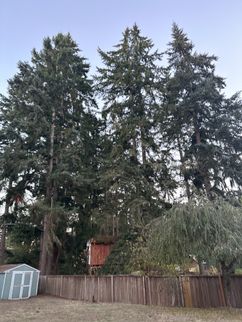


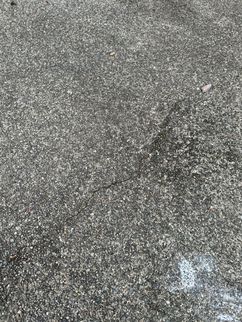

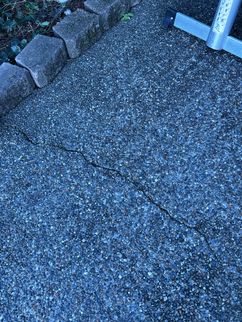
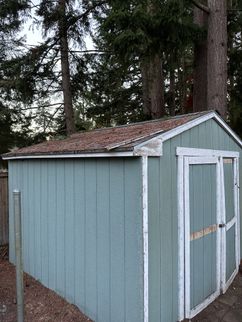
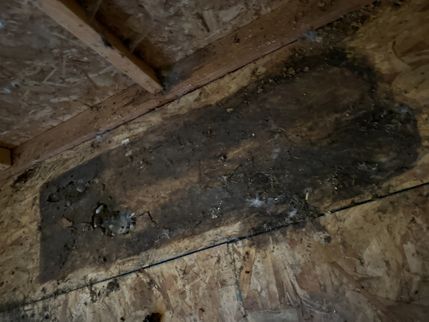

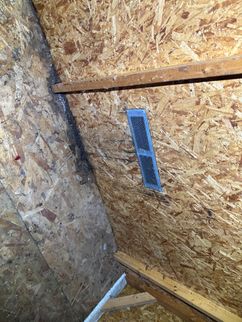

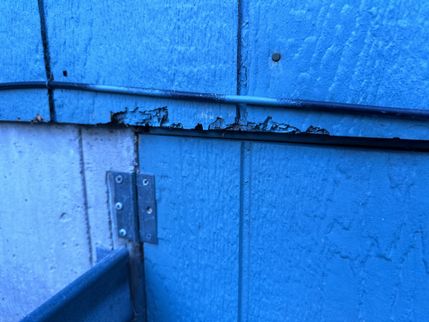

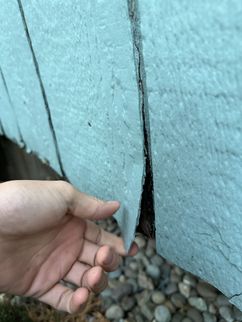

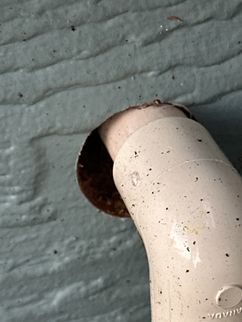
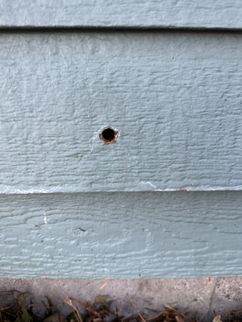
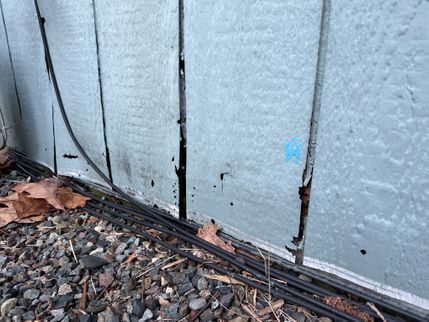
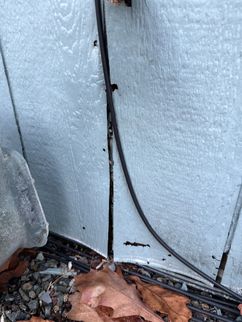
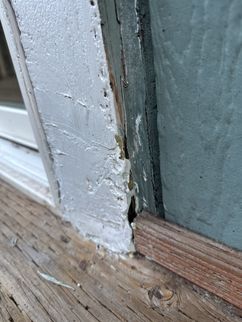
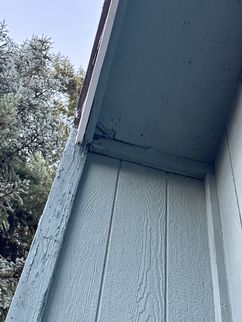
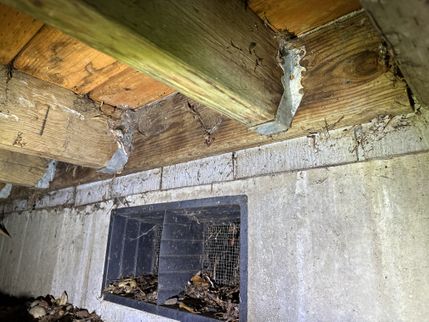



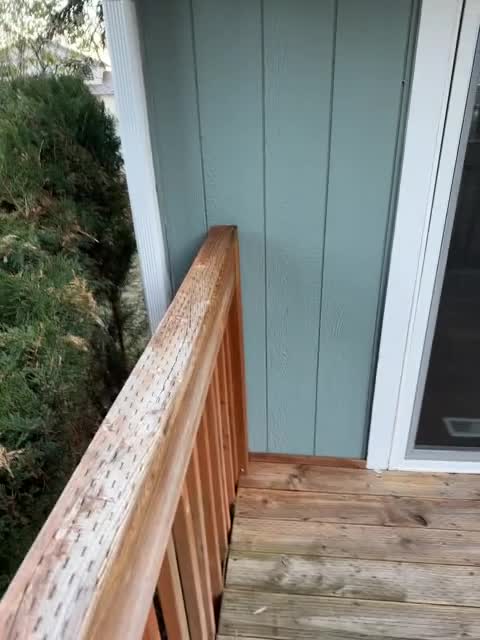

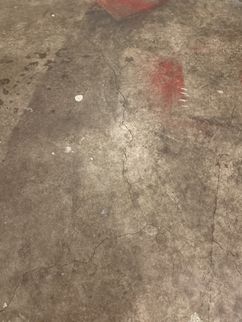


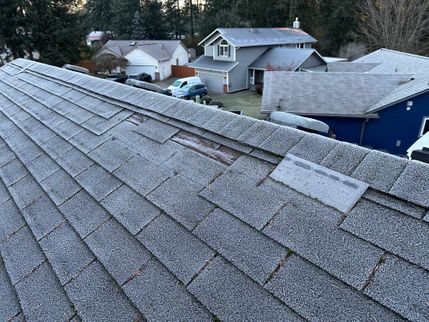







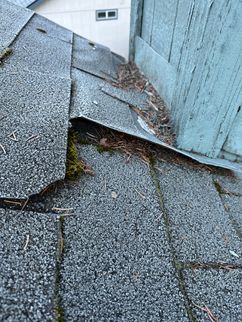

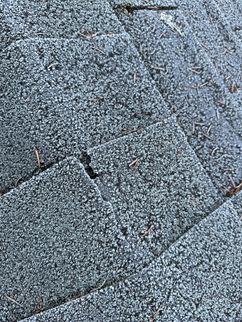
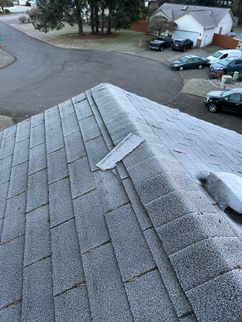
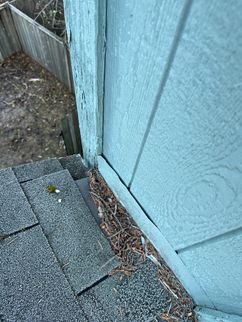

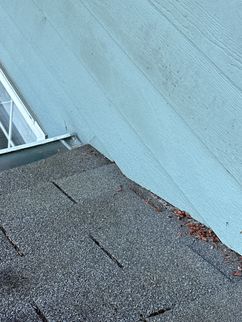
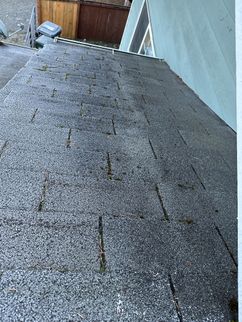


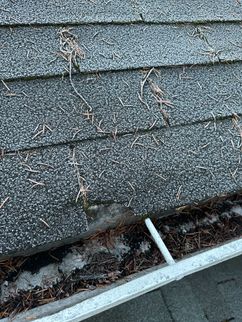
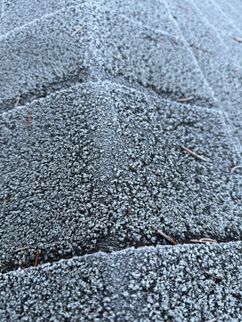

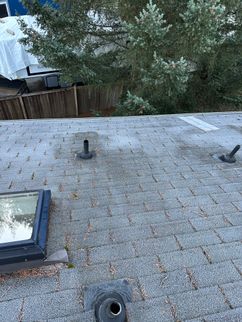
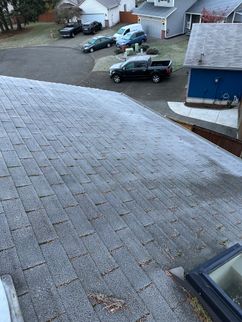
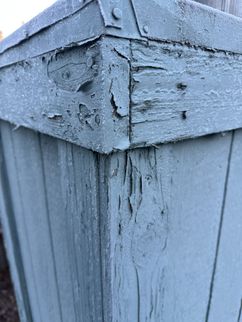
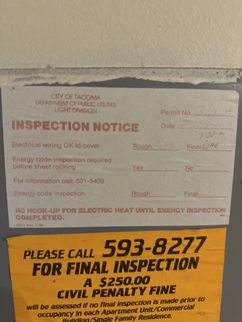
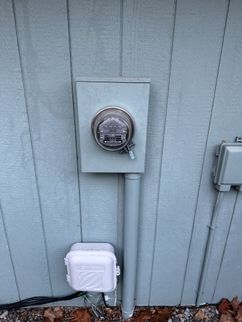
-700x500 (3).jpg)
 (1) (1).png)
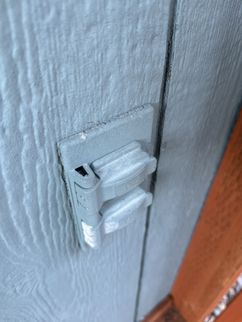

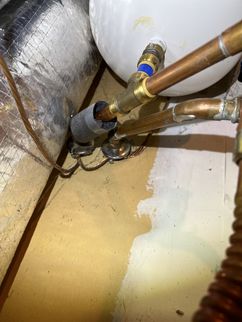

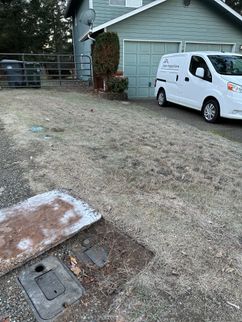
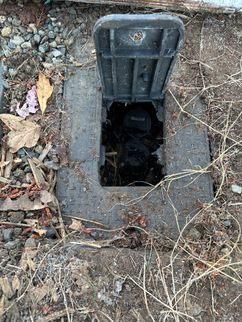

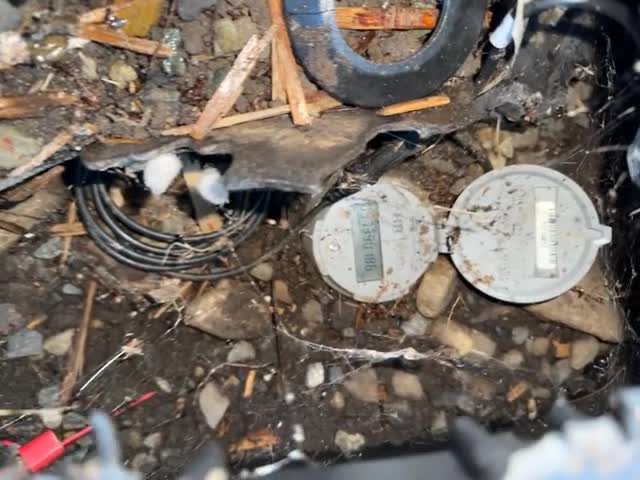


 (1) (1).png)

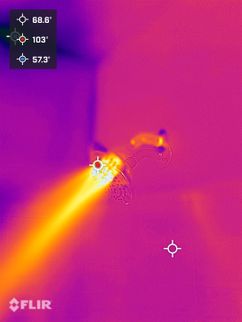
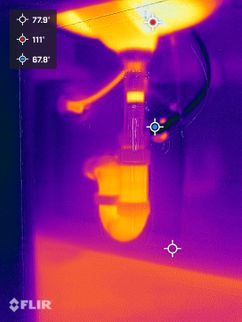
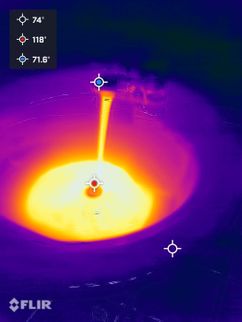
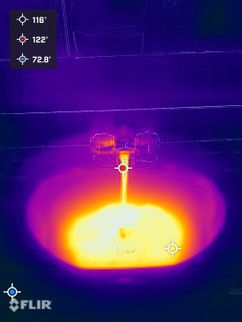
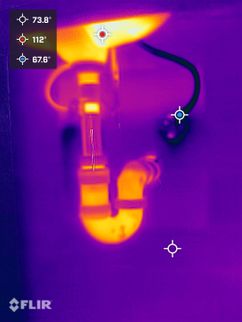
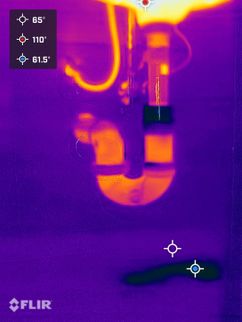

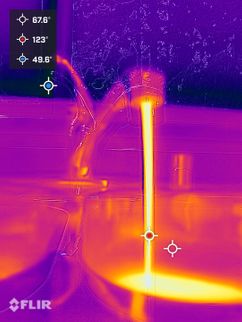
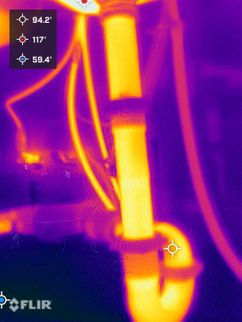
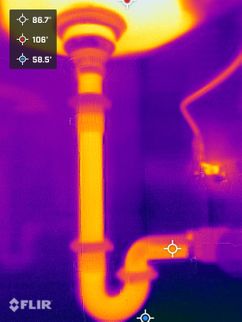
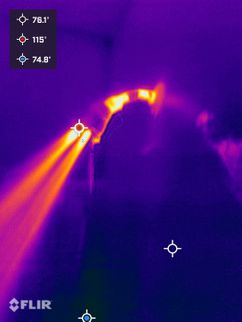
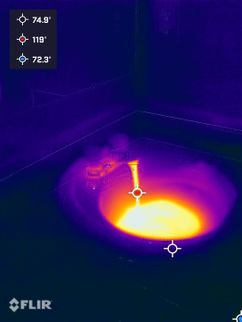
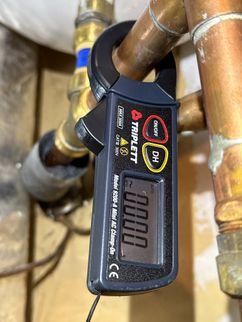
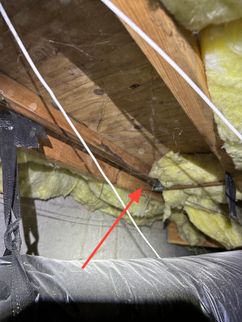
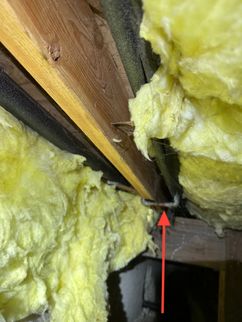
 (1) (1).jpg)
 (1).jpg)
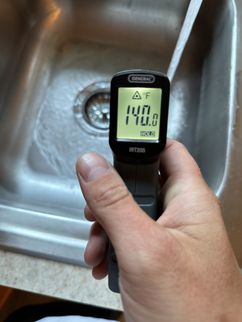
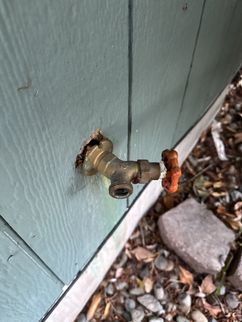

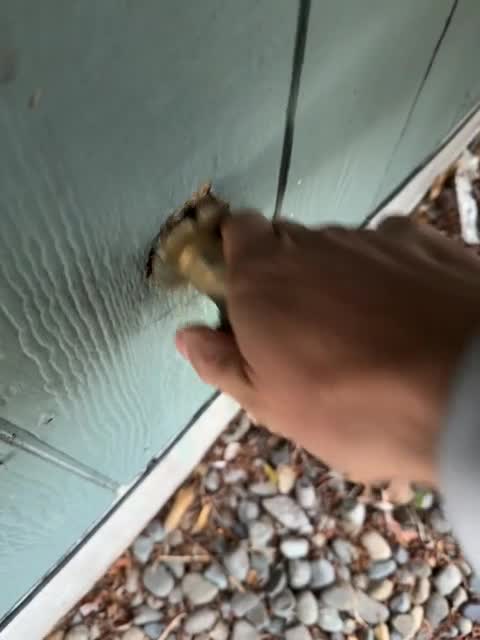
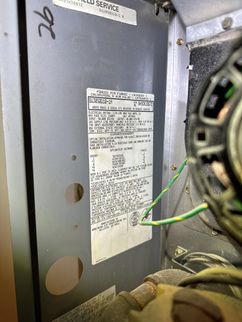
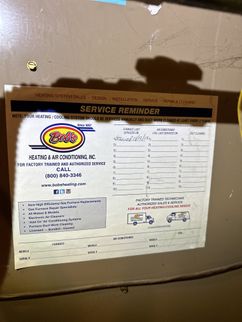

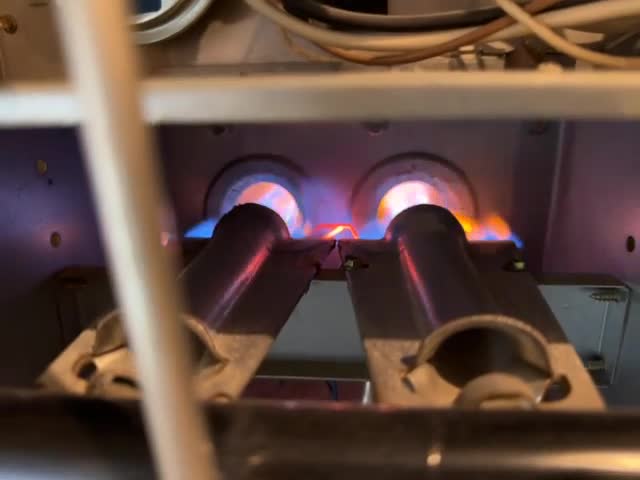
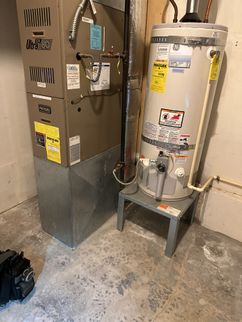
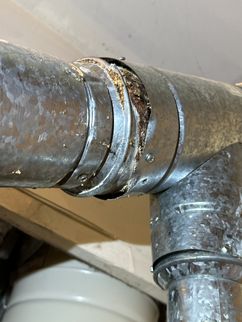
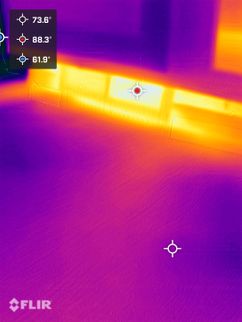
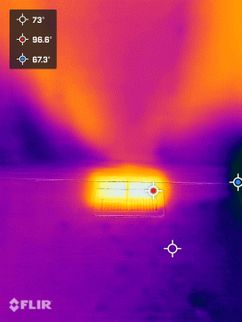

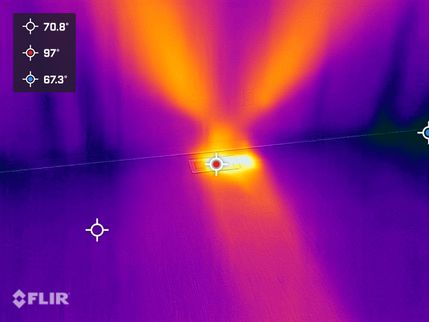
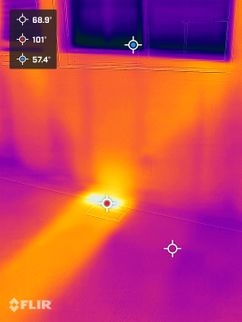
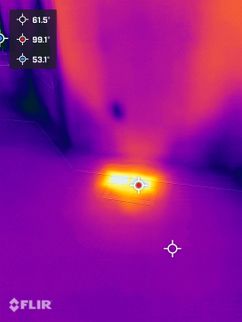
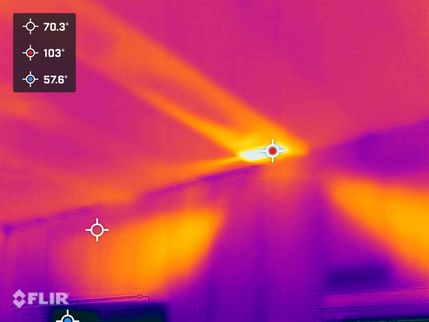
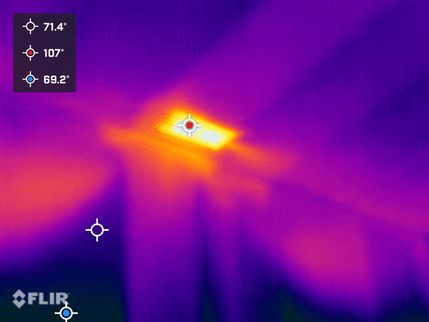


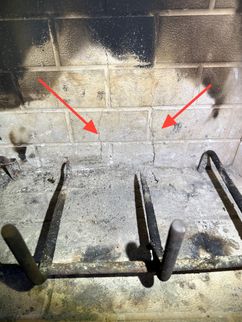

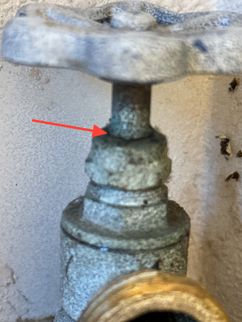
.png)
